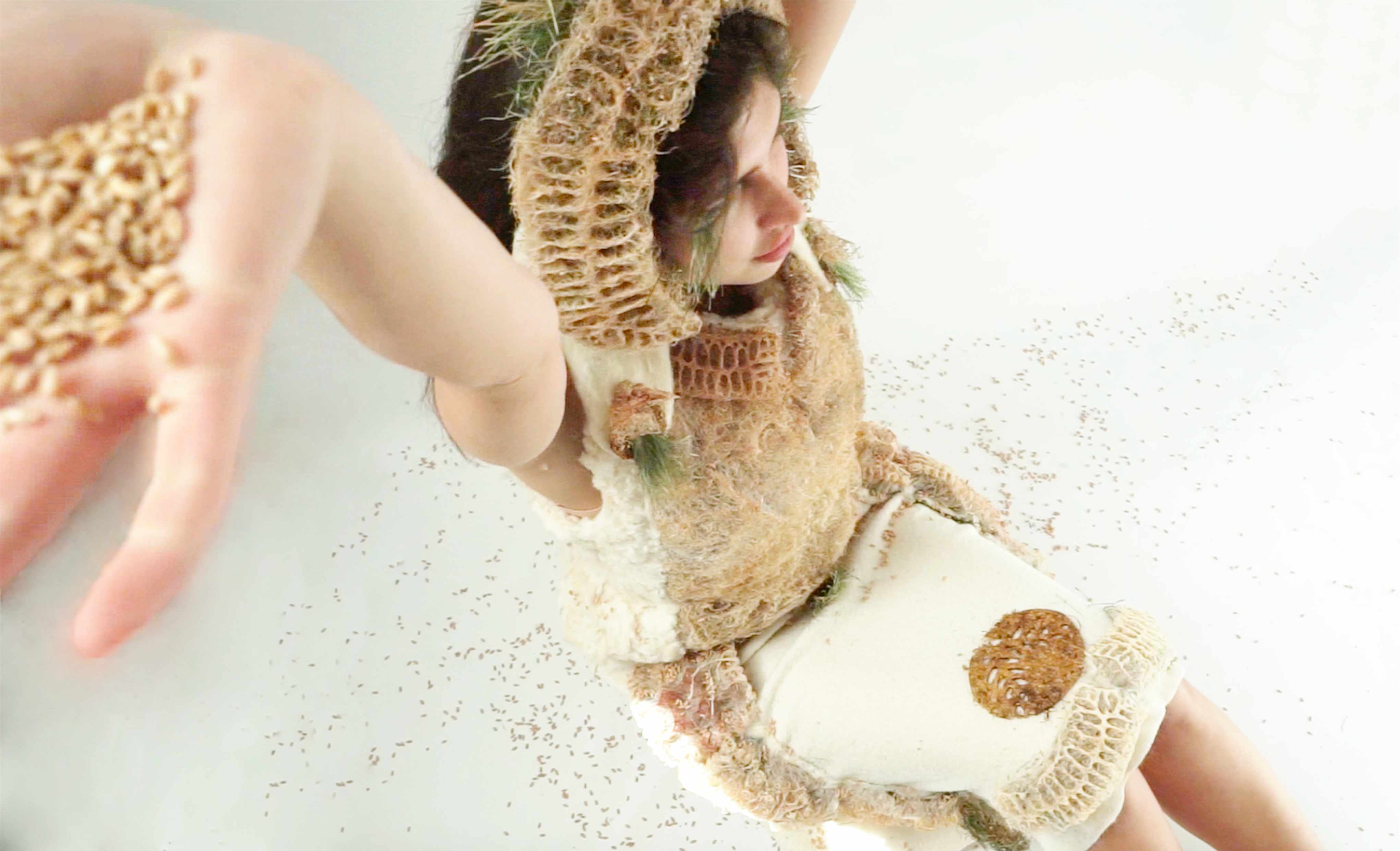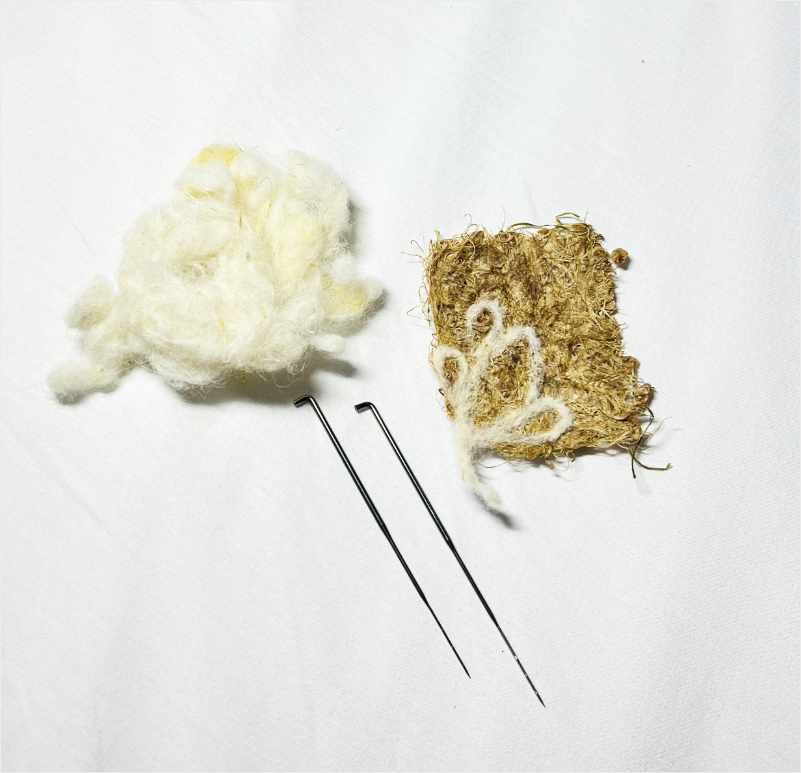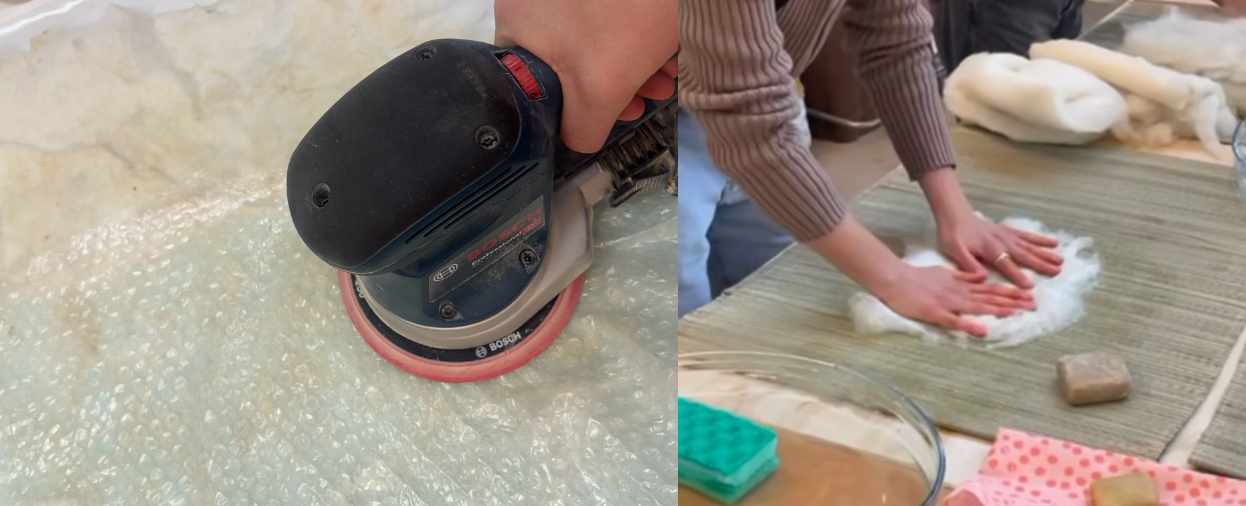WOOL WASTE FIBERS | Growing medium & garment material¶

PATTERNS & MOULDS | Symbiosis with other materials¶
Through experimentation and various changes in growing conditions, I was able to create an array of root embroidery patterns, which I then incorporated into garments inspired by traditional Slovak folk costumes. The second crucial step of my research was figuring out how to apply the root embroidery and lace to the garment. My primary objective was to use only natural materials that have a connection to traditional uses. This led me to consider using wool. I was further inspired by a workshop by the exceptionally talented Dutch artist Claudy Jongstra, where I learned about traditional wet felting and needle felting techniques. The primary source of wool I use is short fibers of waste wool from Mallorca. Unfortunately, since the middle of the last century, the rise of synthetic fibers has led to a steady decline in the importance of wool in the textile sector. Nowadays, wool is a marginal fiber on the textiles market. Large quantities of unmarked raw wool have become problematic waste, which is often burned or landfilled, instead of being an income source for sheep farmers. (Rajabinejad, H. & Buciscanu, I. & Maier, S. 2018) Through my experiments with beeswax, I discovered that it can be used as a natural binder for dried grass fibers. As I take a holistic approach to materials, I try to utilize all of their components. Thus, I was excited at the possibility of incorporating a layer of seeds into the garment, particularly on the reverse side, to provide the wearer with a unique tactile sensation that connects them with nature.
Wool as a growing medium | Experiments¶
Wool is a highly absorbent natural material that can hold moisture better than most other natural materials. This property enables wool to regulate the environment around it, making it an excellent temperature regulator. The breathable nature of wool fibers also allows for good aeration and root growth. Not only did I find inspiration in wool's traditional use in clothing, but I also experimented with reusing the wool growth medium for felting. After harvesting the wool, I dried it and felted it.



WOOL BASE | Electric sander felting¶
I used an electric sander to wet wool. This method saved me a lot of time and allowed me to work on larger pieces. To use it, I placed the wool in between two layers of bubble wrap or plastic and turned the sander on the lowest setting.

